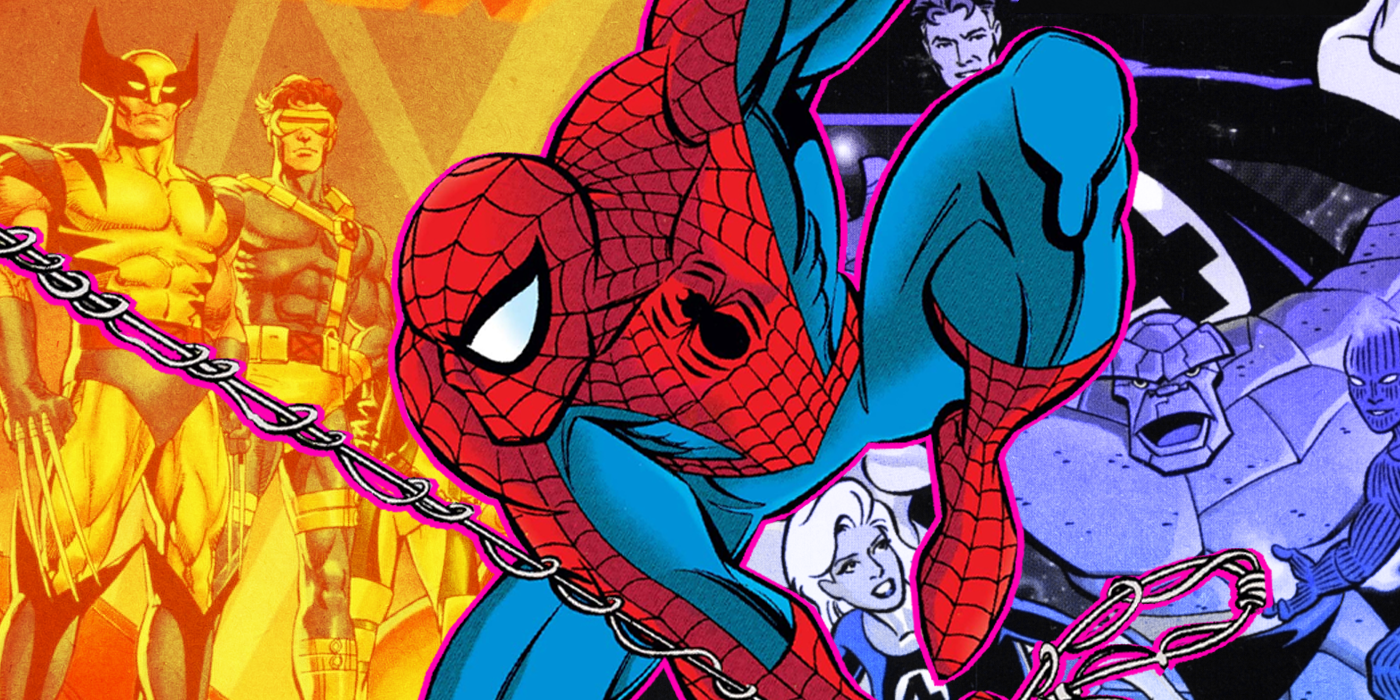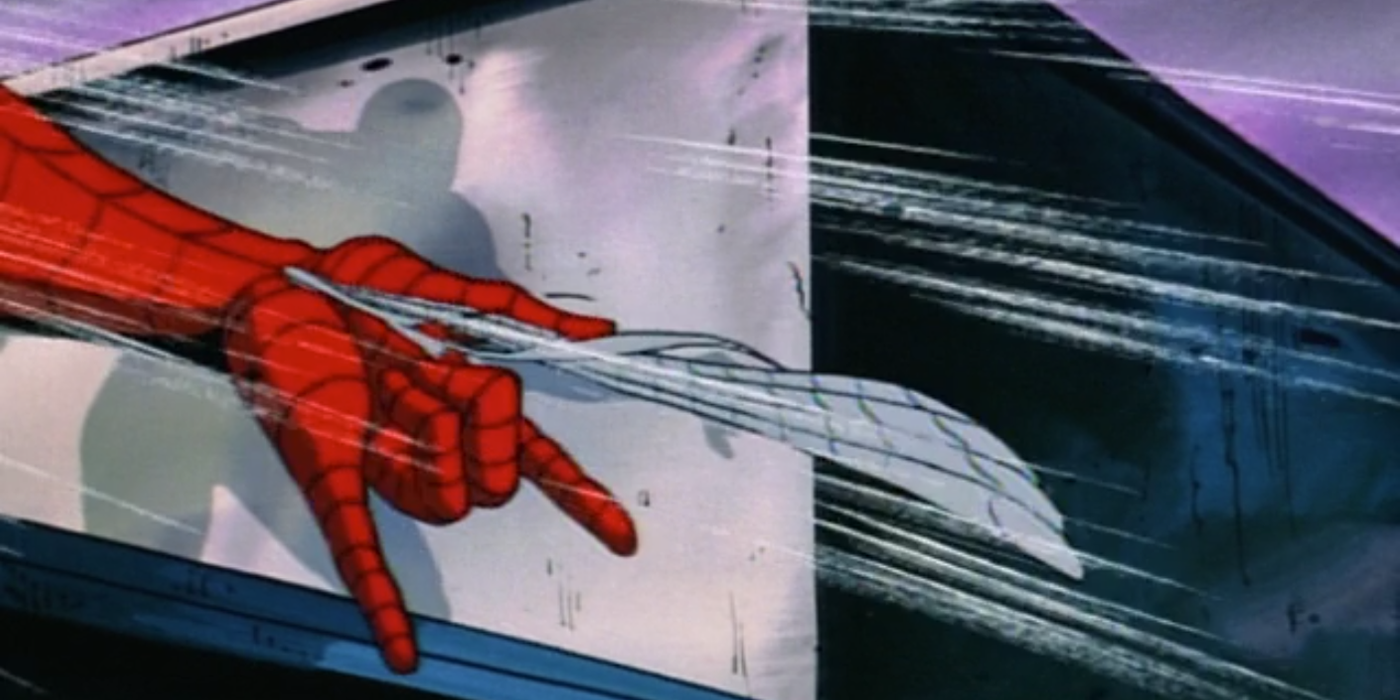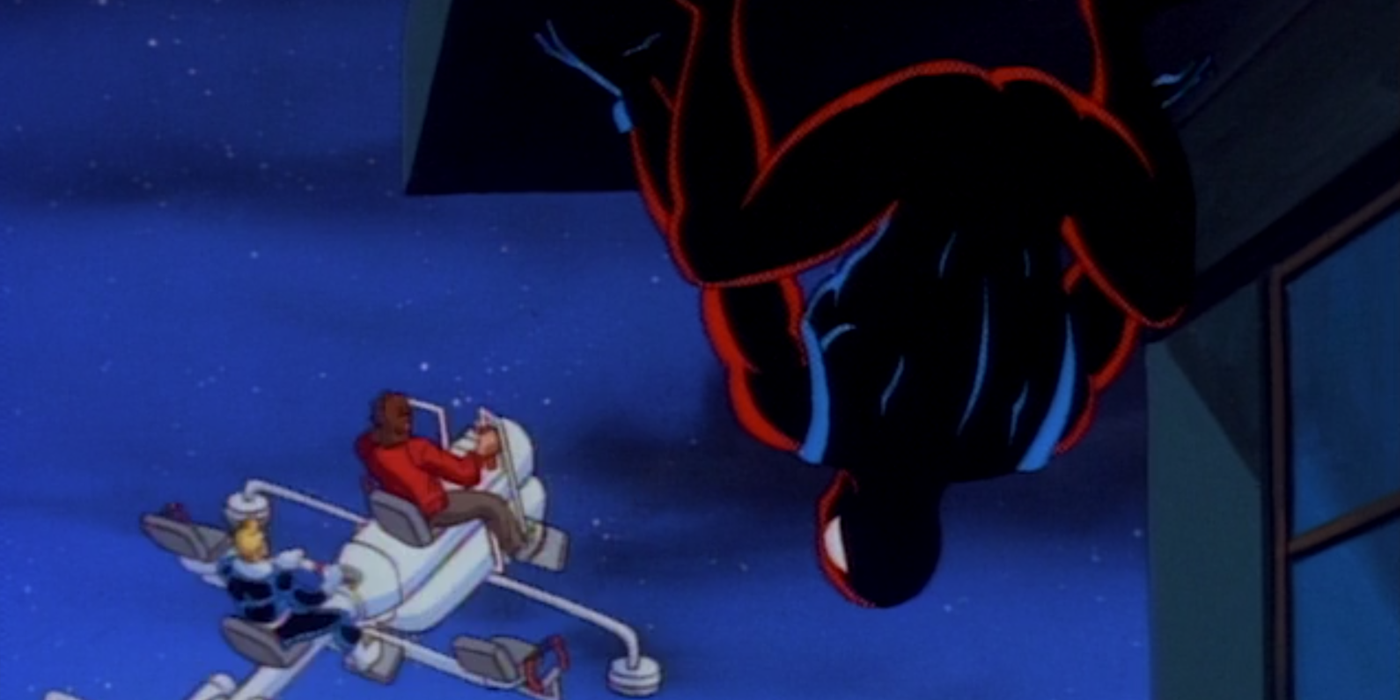The third year of X-Men: The Animated Series began in September 1994 with a five-part adaptation of “The Phoenix Saga." In the final installment, various superheroes were shown aiding a panicked global populace. Moments before War Machine was spotted air-lifting a civilian to safety, a familiar shadow leapt into place and a distinctive red glove entered the frame, firing off webbing. With Spider-Man: The Animated Series preparing to debut that fall, this seemed to be a clever bit of cross-promotion by its sister series. But if Marvel Films and Fox Kids executives had gotten their way, it would never have made it to air.
Even in an era defined by the X-Men, Spider-Man remained Marvel Comics' crown jewel, and with more than a decade since the wall-crawler’s last TV series, no expense was spared to give him his due. On top of working around plot points and characters earmarked for James Cameron's ill-fated feature film and dealing with the issues that resulted in Spider-Man's original showrunner being replaced during pre-production, there were high expectations for the series. As Spider-Man's creative team grew increasingly protective of their lead, a character model for a potential cameo appearance on X-Men was rejected without explanation. This was a setback for which director Larry Houston had already devised a solution.
A fan of Marvel Comics' cross-title pollination, Houston sought to bring that experience to the small screen with X-Men. Having discovered that labeling model sheets generically during the design process was a way of avoiding scrutiny, when presented with a second chance at a Spider-Man appearance, he knew exactly what to do and how to do it. After the earlier full model with the character's name attached was rejected, a black and white design of Spider-Man's gloves titled "Mutant Hands" skirted past executives and made it to air.
In 1994, offered the chance to work on Fantastic Four by incoming supervising producer Tom Tataranowicz, Houston left X-Men prior to its final season in favor of Marvel’s first family. Amid efforts to more closely draw upon the original comics by Stan Lee and Jack Kirby, he attempted to flesh out the Marvel Action Universe -- as it became known in some TV markets during its second year in a nod to the short-lived 1988-1991 programming block -- with cameos, just like what had been done on X-Men.
The Fantastic Four episode “Nightmare In Green" saw Houston call back to his prior work by including a fleeting plainclothes X-Men appearance. It also featured a blink-and-you’ll-miss-it cameo from Spider-Man -- sort of. Challenged when attempting to feature the Web-Slinger once again, Houston and company settled for the next best thing and included his clone, the Scarlet Spider. Not that the distinction was clear to viewers, with the character deliberately kept in shadow and only faint details of his costume visible to suggest that it might not be Spider-Man.
Even with the increase in quality during Fantastic Four's second year, it struggled to find an audience and was canceled in 1996. The following year X-Men completed its run with three hold-over episodes; Spider-Man aired its final episodes in January 1998. Houston would work on later Marvel animated projects -- including Avengers: United They Stand and the underrated X-Men: Evolution -- but the end of Spider-Man closed a unique chapter in Marvel animation that only now may be reopening. And thanks to his ingenuity, viewers got to see Spider-Man pop up in Marvel's animated world, even if it wasn't explicitly him.



